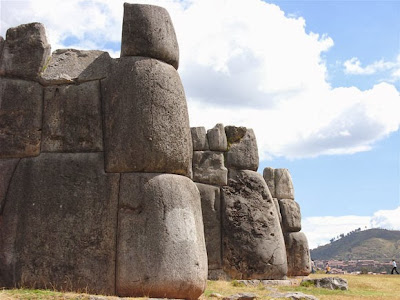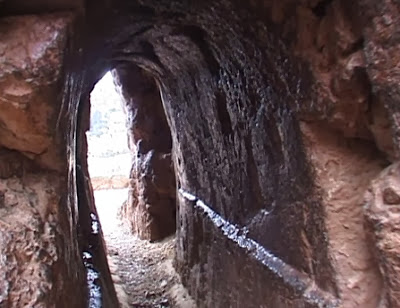Costesti, a small Romanian village, has some interesting and incredible stones known as trovants, which are believed to have life in them and trovants is a geological term in Romania which means cemented sand. Trovante, is not a part of any science fiction but geological phenomenon, consisting of spherical shapes of cemented sand which probably existed due to some powerful seismic activity. It is believed that the earthquake which took place around 6 million years back could have led to the creation of the first trovants.
The most amazing discovery of these mysterious stones is that they grow as if they are alive after coming into contact with water from a heavy rainfall and these stones tend to grow from 6-8 millimeters to 6 -10 millimeters in size. They are compared to the famous rocks in Death Valley, California, where most of these stones even move on their own without any assistance of any kind and when they are cut, they reveal ellipsoidal and spherical rings which are similar to tree trunks.
Another unique aspect of these stones is that though they vary in size, from a few millimeters to around 10 millimeters they are very much similar. Many presume that these trovants consist of stone core with an outer shell of sand and after a heavy rain, smaller stones form over the larger ones giving its name of `growing stones’, while others call them living stones which reproduce.
Some believe that the trovants increase in size due to its high content of numerous mineral salts that are present under the shell and when the surface tends to gets wet, the presence of the chemicals begin to start spreading, thereby putting pressure on the sand that makes the stone to grow.
However, despite great efforts being done, scientists have failed to come up with a valid logical explanation or a well documented research or experiment conducted on why these stones are having extensions similar to those of roots. These trovants behave like some unknown inorganic form of life which is amazing and mysterious though local residents did have an idea and were aware of these stones unusual properties for over 100 years but did not pay much attention to them and used these stones as building material as well as for tombstones. Presently this unique discovery remains to be a popular tourist attraction in Romania and Trovants Museum National Reserve which was inaugurated in the year 2004 is now protected by UNESCO.
The most amazing discovery of these mysterious stones is that they grow as if they are alive after coming into contact with water from a heavy rainfall and these stones tend to grow from 6-8 millimeters to 6 -10 millimeters in size. They are compared to the famous rocks in Death Valley, California, where most of these stones even move on their own without any assistance of any kind and when they are cut, they reveal ellipsoidal and spherical rings which are similar to tree trunks.
Another unique aspect of these stones is that though they vary in size, from a few millimeters to around 10 millimeters they are very much similar. Many presume that these trovants consist of stone core with an outer shell of sand and after a heavy rain, smaller stones form over the larger ones giving its name of `growing stones’, while others call them living stones which reproduce.
However, despite great efforts being done, scientists have failed to come up with a valid logical explanation or a well documented research or experiment conducted on why these stones are having extensions similar to those of roots. These trovants behave like some unknown inorganic form of life which is amazing and mysterious though local residents did have an idea and were aware of these stones unusual properties for over 100 years but did not pay much attention to them and used these stones as building material as well as for tombstones. Presently this unique discovery remains to be a popular tourist attraction in Romania and Trovants Museum National Reserve which was inaugurated in the year 2004 is now protected by UNESCO.



































